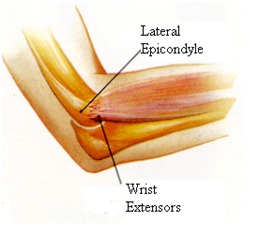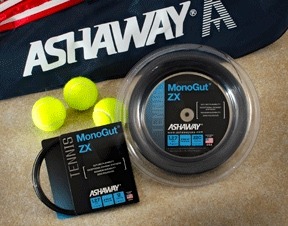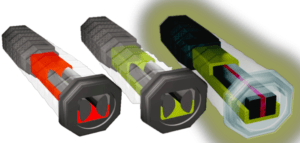Arm injuries and how to address them
It’s a tennis player’s worst nightmare. That nagging pain in your elbow, shoulder, or wrist that just won’t go away. Where did it come from, and what could have caused such discomfort in the first place? This is a very serious problem in racquet sports, and unfortunately, it’s one of the most misunderstood issues players face. More often than not, the approach many players take only compounds the problem because, rather than address it, they simply ignore it and hope it goes away. News flash……it won’t!
So, first things first. It’s essential to recognize that once this problem arises, the bulk of the damage has already been done. Often players come to me and say, “Hey Tim, you’re the pro, so fix this for me,” and they expect that I have some magic solution tucked away in a sparkly box in the back room. Sorry to say that this couldn’t be further from the truth, and now they’re going to get some news that they are definitely not going to want to hear.
 Let’s take tennis elbow, for instance. This condition can be caused by several different things, but just be aware that the basis of the injury is inflammation in the area around the elbow. A direct blow to the area can bring on tennis elbow in a flash, which is what happened to me. A constant pounding over time with a stiff racquet and stiff string is thought to be a main offender in tennis, too, so let’s take a look at this.
Let’s take tennis elbow, for instance. This condition can be caused by several different things, but just be aware that the basis of the injury is inflammation in the area around the elbow. A direct blow to the area can bring on tennis elbow in a flash, which is what happened to me. A constant pounding over time with a stiff racquet and stiff string is thought to be a main offender in tennis, too, so let’s take a look at this.
- Let’s assume you currently do not have any issues. Great, so let’s keep it that way. If you’re over 35 years of age, it’s time to come to grips with the fact that your body is not the same as it was when you were 20. Your recovery time is longer, and your chances for injury increase with each passing year. Now is the time to take care of yourself instead of worrying about it after the injury occurs.
- If you’re healthy, it’s time to take preventative measures, which is the best thing you can do for yourself if you plan to stay active on the court for many years to come. Consult with a professional racquet technician to find a nice, flexible racquet and a soft string to complement that racquet- more on this in a moment
- Next, visit your teaching pro and have them verify proper technique, which certainly can cause elbow issues. A note here: don’t ask your teaching pro to help you cure your tennis elbow. Tennis pros teach tennis, and doctors address tennis injuries, and you would be well advised to keep that in mind. All you’re looking for from your teaching pro is for them to observe you while hitting balls. Leading with the elbow on a one-handed backhand is a sure-fire way to induce stress on your elbow and invites injury. Likewise, contacting the ball late on your forehand places undue stress on the inside of your elbow, often referred to as golfer’s elbow. These are the types of things your teaching pro should be looking for. If you’re healthy, do the things mentioned above to stay that way, and you’ll enjoy many years to come participating in the sport you love.
- But what if you’re injured? Once you have a problem, you’re likely going to have to put down your racquet and address it right away. See a trained orthopedic professional and have your problem properly diagnosed.
- Depending on the severity of your injury, your recovery and rehabilitation could take up to several months. This is the news I mentioned above that no addicted tennis player ever wants to hear, BUT, if this is your diagnosis, I strongly encourage you to follow your doctor’s orders.

Now, back to that soft string and racquet I mentioned earlier. Soft string refers to a string that has a high elongation, or in layman’s terms, it stretches a LOT at impact. How do you know what strings are soft and what strings are not? A general rule of thumb to follow is that the bulk of polyester strings are NOT soft. Some are softer than others, but for the most part, poly strings are still stiffer than standard nylons. Nylon strings are much softer, and the softness will vary depending on the construction of the string. Strings that are considered to be nylon-based but multifilament (think Wilson Sensation) are softer strings that tend to take vibration and dissipate it throughout the many fibers inherent in the string. Natural gut, while not the softest string we’ve tested here at IART, is a great solution for players recovering from arm injuries. Why? Natural gut stretches more at tensions between 50 & 70 pounds, and its rebound effect is phenomenal. It’s one of the few strings that I can honestly say will add power to your game with little to no extra effort on behalf of the player. The softest string we’ve tested here at IART is Ashaway’s MonoGut ZX. This is a Zyex-based string that has proven to be a terrific option for many applications, and I never hesitate to recommend it to players looking for comfort and power. The Zyex-based string is like having the best of both worlds. It reacts like poly in a racquet with its snap back capability, yet stretches more than any other string, which means as it stretches, it’s absorbing energy from the ball. The more a string stretches, the more energy it absorbs. The more energy it absorbs from ball impact, the more energy it returns to the ball. Translation: increased power. Plus, the Zyex-based string tends to stay in place on the racquet. There’s far less straightening of the strings than there is with common synthetics. Another huge bonus to the Ashaway MonoGut is that it’s impervious to moisture. This can be a huge plus to those of you living in warm areas where the humidity is quite high. Constant play tends to break down the coating on strings, and high humidity only exacerbates the problem.

Now, for a soft racquet, which in effect means that the racquet is more flexible. All racquets bend, and this typically happens at the yoke or throat of the racquet. When you strike a ball, your racquet bends at impact, and this bending equates to softness to some degree. This is a byproduct of the racquet material plus the beam width. Look at the image to the right. The far right section shows the racquet from the side, and you can clearly see that it’s much thicker in the throat. If you have tennis elbow, this is exactly the shape of a racquet that I would advise you to avoid. Think of the original Wilson Profile 2.7, which was one of the stiffest racquets ever made. Powerful, yes, but extremely stiff.
Technologies that tend to make a racquet soft and comfortable include:
- Racquets with bigger grommets, like the original Volkl V1 Classic, are one of my all-time favorites. This frame had bigger grommets at the 6, 12, 3 & 9 o’clock areas that, in effect, made the sweet spot bigger while at the same time, reduced vibration on off-center hits. Other manufacturers followed Volkl’s lead with their version of this technology, but suffice to say, larger grommets tend to allow the string more freedom of movement, and there are many benefits from that. Wilson also introduced an articulated grommet technology that also enhanced string movement on off-center hits. This method allowed for a traditional-shaped grommet to rock back and forth within an expanded slot as opposed to a round hole drilled into the frame.
-

Volkl handles Vibration-reducing technologies in the handle, like the innovative systems designed by Volkl that you can see HERE, are great. These handle systems are unique in that they’re designed to prevent the vibration from reaching your arm after impact, and yes, they actually work. There are other racquets on the market with designs specifically to address the issue of vibration caused by the shock of the ball striking the strings in your racquet. A little time online and I’m sure you can find many to choose from. IMHO, as mentioned earlier, the V1 Classic by Volkl is a gem, but unfortunately, the original is no longer available!
- Here’s one that’s often overlooked. How about just moving to an oversized racquet? Larger head sizes mean larger sweet spots and fewer off-center hits that cause vibration. This is one of the easiest things you can do to not only improve your game but, at the same time, add comfort and power.
- Adding weight to your racquet is always beneficial. Work with a trained racquet technician who can pinpoint the areas where weight can be added and take you there in increments until you find what’s best for you. In tennis, weight is your friend, and unfortunately, too many players think exactly the opposite is true. Lightweight racquets are a recipe for disaster when it comes to arm injuries. I recommend you use a racquet that is as heavy as you feel comfortable handling.
- Have your grip properly sized by a racquet tech that knows what he/she is doing. There is more than one thing to consider when measuring for proper grip size. Smaller grips allow more flexible movement in the wrist, so if you’re hitting heavy topspin forehands and your actual grip size is 4 3/8, then a 4 1/4 can be beneficial. Remember too, that if you’re racquet is turning in your hand on off-center hits, then that smaller grip size is the likely culprit. If you’re using a grip that measures one size larger, you can be assured that your racquet is going to be much more stable on those off-center hits. Having more mass to hold onto is going to help you resist the torque (twist) that takes place when you’re not striking the ball in the center of the racquet.
- Don’t forget to stretch and use targeted exercises that pinpoint the areas of the arm that are the weakest. You can pick up round rubber tubes at any sporting goods store, and they come in different difficulty levels, often designated by color. This is one of THE best preventative measures you can take with regard to arm injuries.
A side note: I’ve experienced tennis elbow in my life that was caused by a direct blow to the elbow. I’m dedicated to a regime of stretching exercises before and just after play, and my racquet of choice is a Donnay SuperLite 114 (yes, I’ve customized it to add more weight), and it’s strung with Ashaway MonoGut ZX 16 at 58 pounds. I also like to hit with a Wilson Clash 100, but the truth is that when I switch to the Donnay, there was a clear and immediate improvement in my game, not to mention the comfort aspect of the Donnay frame. Fewer mishits and more control and power were what I experienced, and since making the change, I’ve enjoyed my time on court much more (wink wink).
NOTE: Since this article was first written, there have been other racquets and strings that are good candidates for protecting you from injuries on the court. Remember to consult with a trained racquet technician who has the expertise and experience to walk you through the process of finding the right combination of string and racquet to complement your game.


Comments (9)
Great article, TIm.
Hi Tim, could you tell us how much weight you put on your racket (Donnay)? And where?
Thanks
Sure see below in my reply to Bob
I am curious, Tim. That is a very light racquet so 6 pts HH would be expected. Exactly how much weight was used and where did you place the weights? I would guess 10,2,4,8 as likely positions to help absorb some of the vibration and possibly some in the handle to counterbalance (otherwise, the head would be too heavy).
Bob this is one of the most comfortable racquets I’ve ever hit with so no worry about shock and vibration due to the design of the frame (check out https://www.xenecoretennis.com/racquets/superlite-racquets/superlite-114.html for more info on design.)
Stated strung weight is 8.9 oz but mine now weighs 10.940 oz. The racquet is now 1.60 points HH and all of the weight on this one was added under the grip with 1 inch 3M lead tape. I have two of these and the other one was matched to my first one. On that one I actually had to add some weight to the yoke (1/2 inch strips) and the rest was placed under the grip.
Thank you for Sharing Tim.
Great Article
Great article Tim. I note that many tennis players have also found that using a band dampener tied to the bottom strings of your racket can significantly reduce vibration and your chances of getting tennis elbow. Top pros such as Victoria Azarenka, Bethany Mattek-Sands, Maria Sharapova, Steve Johnson, Sam Querrey, Kevin Anderson, Bernie Tomic, Andre Agassi, Andy Roddick and Mats Wilander all play with band dampeners. The OTZ Band dampener made by Own the Zone Sporting Goods has been purpose-designed to simultaneously absorb initial impact shock and significantly reduce ball impact vibrations.
The colorful OTZ band dampeners greatly improve upon rubber bands. The OTZ bands are not made out of cheap rubber (made with clay) so they won’t dry out quickly in the sun, lose their elasticity or crack after repeated use. The OTZ bands come in a rainbow variety of 9 bright colors. OTZ bands superbly dampen vibration, prevent tennis elbow and won’t fly off your racquet. Own the Zone Sporting Goods has been in business since 2006. Check us out and save wear and tear on your arm. https://www.ecogripzone.com/otz-band-dampeners/
Yes many players use a vibration damper on their strings David. I typically recommend a damper to players but in the end, it always comes down to player preference. Some players just like that “pingy” sound they get from the strings and conversely, they do not like the muted sound with a vibration damper. I personally like bands like the OTZ band you mention or a damper that weaves through several strings under the last (bottom) cross. They seem to provide the greatest dampening effect.
Great article!
A couple of things I would add is; knowing the “effective stiffness ” of a racquet and string unit is important if trying to prevent or aid in the reduction of tennis elbow. If the racquet is very stiff (over 70 RDC), then the string bed needs to be “softer”.
Many strings will produce a soft string bed until they are hit really hard then the stiffness increases quickly.
This is a function of string and of course, at what tension it is installed.
Shock or impact pulse (how quickly string stiffens up) can contribute more to physical pain than the high frequency that can be damped out by vibration dampers. I love vibration dampers, but I would not rely on them to mitigate “painful shock.”